
Surrey is a ceremonial and non-metropolitan county in South East England, bordering Greater London to the south west. Surrey has a large rural area, and several significant urban areas which form part of the Greater London Built-up Area. With a population of approximately 1.2 million people, Surrey is the 12th-most populous county in England. The most populated town in Surrey is Woking, followed by Guildford.

Guildford is a town in west Surrey, around 27 mi (43 km) southwest of central London. As of the 2011 census, the town has a population of about 77,000 and is the seat of the wider Borough of Guildford, which had around 148,998 inhabitants in 2019. The name "Guildford" is thought to derive from a crossing of the River Wey, a tributary of the River Thames that flows through the town centre.
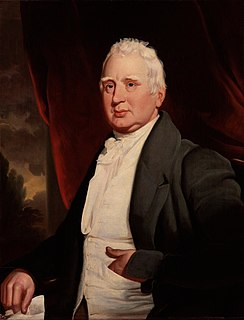
William Cobbett was an English pamphleteer, journalist, politician, and farmer born in Farnham, Surrey. He was one of an agrarian faction seeking to reform Parliament, abolish "rotten boroughs", restrain foreign activity, and raise wages, with the goal of easing poverty among farm labourers and small land holders. Cobbett backed lower taxes, saving, reversing commons enclosures and resisting the 1821 gold standard. He opposed borough-mongers, sinecurists, bureaucratic "tax-eaters" and stockbrokers. His radicalism furthered the Reform Act 1832 and gained him one of two newly created seats in Parliament for the borough of Oldham. His polemics range from political reform to religion, including Catholic emancipation. His best known book is Rural Rides. He argued against Malthusianism, saying economic betterment could support global population growth.

The Cathedral Church of the Holy Spirit, Guildford, commonly known as Guildford Cathedral, is the Anglican cathedral at Guildford, Surrey, England. Richard Onslow donated the first 6 acres (2.4 ha) of land on which the cathedral stands, with Viscount Bennett, a former Prime Minister of Canada, purchasing the remaining land and donating it to the cathedral in 1947. Designed by Edward Maufe and built between 1936 and 1961, it is the seat of the Bishop of Guildford.

The Bishop of Guildford is the Ordinary of the Church of England Diocese of Guildford in the Province of Canterbury.

Sir Edward Brantwood Maufe, RA, FRIBA was an English architect and designer. He built private homes as well as commercial and institutional buildings, and is remembered chiefly for his work on places of worship and memorials. Perhaps his best known buildings are Guildford Cathedral and the Air Forces Memorial. He was a recipient of the Royal Gold Medal for architecture in 1944 and, in 1954, received a knighthood for services to the Imperial War Graves Commission, which he was associated with from 1943 until his death.

The Royal Grammar School, Guildford, also known as the RGS, is a selective independent day school for boys in Guildford, Surrey in England. The school dates its founding to the death of Robert Beckingham in 1509 who left provision in his will to 'make a free scole at the Towne of Guldford'; in 1512 a governing body was set up to form the school. The school moved to the present site in the upper High Street after the granting of a royal charter from King Edward VI in 1552. Around that time, its pupils were playing cricket and their activity was later documented as the earliest definite reference to the sport. The school's Old Building, constructed between 1557 and 1586, is the home of a rare example of a chained library. It was established on the death of John Parkhurst, Bishop of Norwich, in 1575. Although defined as a 'free' school, the first statutes of governance, approved in 1608, saw the introduction of school fees, at the rate of 4 shillings per annum, along with the school's first admissions test. During the late 19th century the school ran into financial difficulty, which nearly resulted in its closure. A number of rescue options were explored, including amalgamation with Archbishop Abbott's School. Funds were eventually raised, however, which allowed the school to remain open, although boarding was no longer offered.
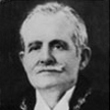
Walter Willson Cobbett was an English businessman and amateur violinist, and editor/author of Cobbett's Cyclopedic Survey of Chamber Music. He also endowed the Cobbett Medal for services to chamber music.

A chained library is a library where the books are attached to their bookcase by a chain, which is sufficiently long enough to allow the books to be taken from their shelves and read, but not removed from the library itself. The practice was usual for reference libraries from the Middle Ages to around the 18th century. This would prevent theft of the library's materials. Since the chaining process was also expensive, it was not used on all books, only the more valuable books such as reference works or large books in a collection were chained. Librarians in the Middle Ages often invoked curses as well to keep books from being stolen. Once such curse written into the books was,
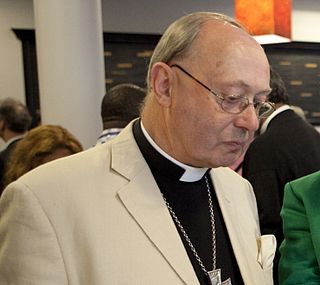
Christopher John Hill, is a retired British Anglican bishop. From 1996 to 2004, he was the Bishop of Stafford, a suffragan bishop in the Diocese of Lichfield. From 2004 to 2013, he was the Bishop of Guildford, the diocesan bishop of the Diocese of Guildford. In addition, he served as the Clerk of the Closet in the Ecclesiastical Household of the Royal Household of the Sovereign of the United Kingdom from 2005 to 2014.
Stephen Farr is a British organist who is currently the Chief Examiner at the Royal College of Organists and the Director of Music at All Saints, Margaret Street.
George Edmund Reindorp was an Anglican bishop. He was the 5th Bishop of Guildford in the Church of England and subsequently the 75th Bishop of Salisbury.
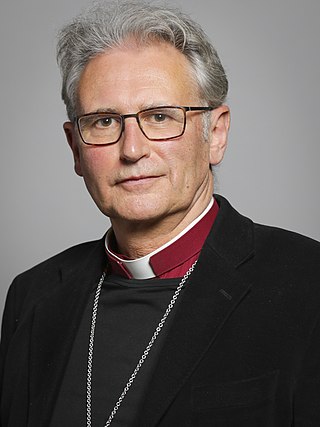
Christopher John Cocksworth is a Church of England bishop in the open evangelical tradition. He is the current Bishop of Coventry; prior to becoming bishop he was the Principal of Ridley Hall, Cambridge.
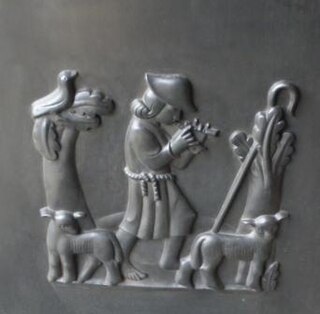
Vernon Hill (1887–1972), born in Halifax, Yorkshire, England, was a sculptor, lithographer, illustrator and draughtsman.

Alan Collins was an English-born sculptor noted for his work at Guildford Cathedral. After continuing his career in England, Collins moved to the United States and continued working there as an artist and, for more than 20 years, as a professor of art at Seventh-day Adventist universities.
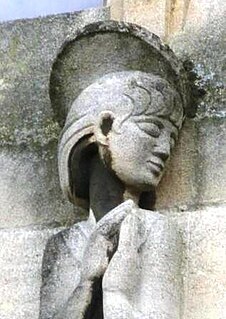
Dennis Huntley, born in Weybridge in Surrey, England, is a British sculptor, furniture designer and author. A Fellow of the Royal British Society of Sculptors, he has completed works for cathedrals, individual collectors and other organisations. Among his most notable works are his sculptures for Guildford Cathedral.
RGS Prep, formerly Lanesborough School, is an independent, preparatory school in Guildford, Surrey, England. The school was established in 1930 and acted as the choir school for Guildford Cathedral. Formerly an important feeder school for RGS Guildford, the two schools merged in 2021 with Lanesborough becoming RGS Prep.
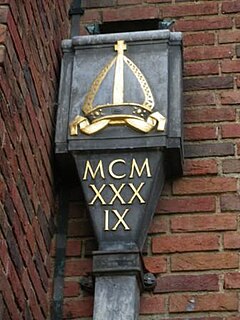
The exterior sculpture of Guildford Cathedral provides many artistic features, including sculptures, engravings and more by some of England’s finest sculptors and craftsmen of the 1950s and 1960s. The people who worked on the cathedral include: Edward Maufe, Alan Collins, Vernon Hill, Eric Gill, John Hutton, Dennis Huntley and others.
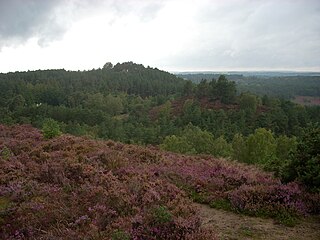
The Devil's Jumps are a series of three small hills near the village of Churt in the county of Surrey in southern England. In the 18th century, the hills were known as the Devil's Three Jumps. The Devil's Jumps are linked to a body of folklore relating to the surrounding area. The highest of the three Jumps, lying to the west, is High Jump with an elevation of 413 feet (126 m). Middle Devil's Jump has an elevation of 328 feet (100 m) and once supported an observatory built by 19th century British astronomer Richard Christopher Carrington. Stony Jump, the easternmost of the jumps, has an elevation of 394 feet (120 m).















